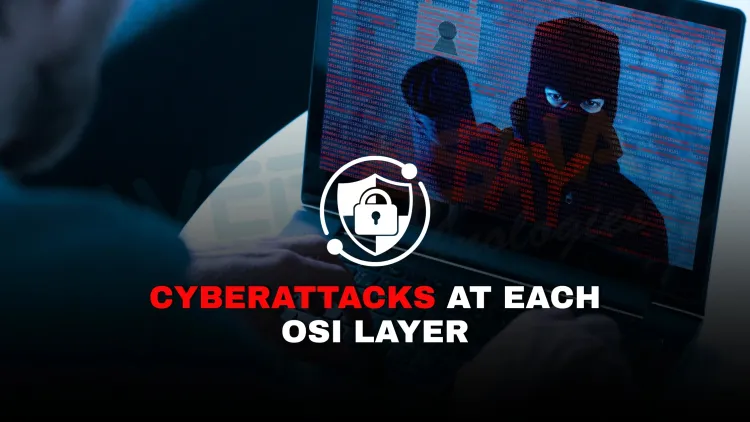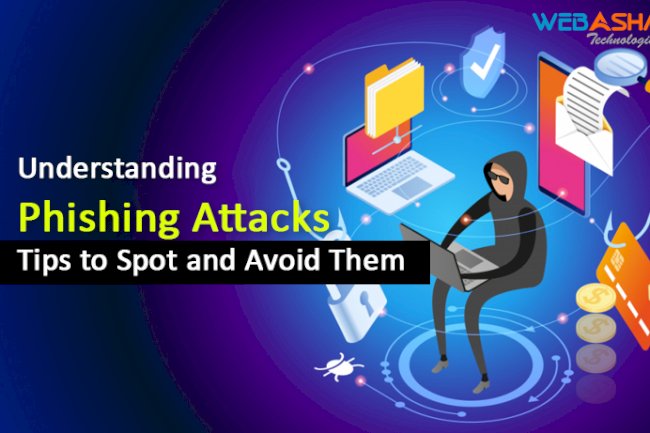What Are the Cyberattacks at Each OSI Layer and How Can You Defend Against Them?
Understanding the OSI model is crucial in cybersecurity, as each of its seven layers can be targeted by specific types of cyberattacks. From phishing and ransomware at the application layer to ARP poisoning and cable tapping at the data link and physical layers, knowing where threats originate enables stronger, layered defense. This blog explores real-time attack scenarios for each OSI layer and provides actionable security strategies for effective threat mitigation.

Table of Contents
- What Is the OSI Model and Why Does It Matter in Cybersecurity?
- OSI Layers and Their Corresponding Cyber Threats
- Layer 7: Application Layer Attacks – The Human Trap
- Layer 6: Presentation Layer – Breaking the Format
- Layer 5: Session Layer – Hijack the Conversation
- Layer 4: Transport Layer – Flooding the Gates
- Layer 3: Network Layer – The Heart of Routing Attacks
- Layer 2: Data Link Layer – Turning Switches Against You
- Layer 1: Physical Layer – Breaching the Hardware
- Conclusion
- Frequently Asked Questions (FAQs)
Understanding the OSI Model isn’t just for passing networking exams — it's your first line of defense against cyberattacks. Imagine your network as a seven-story building. Each floor represents an OSI layer, and attackers have tricks to break into each one. From phishing emails on the top floor to cable tampering in the basement, every layer is a potential battlefield.
Let’s walk through each OSI layer, see how attackers strike, and what real-world defenses can stop them.
What Is the OSI Model and Why Does It Matter in Cybersecurity?
The OSI (Open Systems Interconnection) Model is a conceptual framework that standardizes how data moves across networks. It consists of seven layers, each handling specific communication functions. Understanding it helps identify where attacks occur, so defenders can deploy layer-specific security controls.
OSI Layers and Their Corresponding Cyber Threats
Here's a quick overview of cyberattacks mapped to each OSI layer:
| OSI Layer | Common Attacks | Real-Life Example |
|---|---|---|
| Layer 7 – Application | Phishing, XSS, SQL Injection, Ransomware | A phishing email tricks users into downloading ransomware via fake Office 365 login. |
| Layer 6 – Presentation | SSL Stripping, Encoding Exploits | A public Wi-Fi attacker downgrades HTTPS to HTTP to capture login credentials. |
| Layer 5 – Session | Session Hijacking, Man-in-the-Middle (MitM) | An attacker intercepts a Zoom call and injects spyware into the session. |
| Layer 4 – Transport | TCP SYN Flood, Port Scanning, TLS Downgrade | Botnets send massive SYN requests to overwhelm a web server's TCP ports. |
| Layer 3 – Network | IP Spoofing, ICMP DDoS, Routing Attacks | Attackers spoof internal IPs to bypass access control and launch lateral movement. |
| Layer 2 – Data Link | ARP Poisoning, MAC Spoofing, VLAN Hopping | A rogue device poisons ARP tables to reroute traffic through a malicious gateway. |
| Layer 1 – Physical | Cable Tapping, Hardware Keyloggers, Jamming | A USB keylogger records every keystroke from a victim’s keyboard in a secure office. |
Layer 7: Application Layer Attacks – The Human Trap
How do attacks occur at the application layer?
The application layer is where users interact with the system. Attackers often exploit human behavior or application vulnerabilities to gain control.
Real-Time Example:
An HR manager receives a job application with a malicious Excel macro. Upon opening it, ransomware encrypts files across the corporate drive.
Common Attacks
-
Phishing
-
SQL Injection
-
Cross-Site Scripting (XSS)
-
Ransomware Delivery
Defense Tips
-
Use email filters, WAFs (Web Application Firewalls), and anti-malware tools.
-
Train users on social engineering awareness.
Layer 6: Presentation Layer – Breaking the Format
What is targeted at this layer?
This layer handles data encryption, compression, and translation. Attackers often downgrade encryption or exploit encoding formats.
Real-Time Example:
A hacker sets up a fake Wi-Fi hotspot at an airport. Visitors unknowingly connect, and the attacker strips HTTPS encryption to harvest login data.
Common Attacks
-
SSL Stripping
-
Unicode/Encoding Exploits
Defense Tips
-
Enforce HSTS (HTTP Strict Transport Security).
-
Use end-to-end encryption and updated SSL/TLS protocols.
Layer 5: Session Layer – Hijack the Conversation
How do session-based attacks work?
Attackers hijack or impersonate authenticated sessions, often exploiting weak session tokens.
Real-Time Example:
A remote worker logs into the company CRM over coffee shop Wi-Fi. An attacker intercepts the session and injects malware into the browser.
Common Attacks
-
Session Hijacking
-
Man-in-the-Middle (MitM)
Defense Tips
-
Implement multi-factor authentication (MFA).
-
Use session timeouts and secure cookies.
Layer 4: Transport Layer – Flooding the Gates
What’s vulnerable here?
The transport layer manages end-to-end connections. Attackers disrupt services using floods or probe open ports.
Real-Time Example:
An e-commerce site is crippled by a TCP SYN flood launched by a botnet during Black Friday, causing loss of thousands in revenue.
Common Attacks
-
TCP SYN Flood
-
Port Scanning
-
TLS Downgrade Attacks
Defense Tips
-
Deploy rate-limiting and firewall rules.
-
Monitor for unusual port activity.
Layer 3: Network Layer – The Heart of Routing Attacks
What are the risks at this layer?
Here, attackers manipulate IP-level traffic to bypass restrictions or flood networks.
Real-Time Example:
Hackers perform IP spoofing to impersonate internal servers, giving them unauthorized access to protected systems.
Common Attacks
-
IP Spoofing
-
ICMP DDoS Attacks
-
Route Manipulation
Defense Tips
-
Use access control lists (ACLs) and network segmentation.
-
Monitor with intrusion detection systems (IDS).
Layer 2: Data Link Layer – Turning Switches Against You
How is Layer 2 exploited?
Attackers target MAC addresses and local network protocols like ARP to reroute or sniff traffic.
Real-Time Example:
An intern plugs a rogue laptop into the LAN and runs an ARP poisoning script, silently capturing login credentials.
Common Attacks
-
MAC Spoofing
-
ARP Poisoning
-
VLAN Hopping
Defense Tips
-
Enable port security on switches.
-
Use dynamic ARP inspection (DAI).
Layer 1: Physical Layer – Breaching the Hardware
What physical threats exist?
If attackers can access hardware, they can bypass almost any software-level security.
Real-Time Example:
In a co-working space, someone discreetly installs a hardware keylogger on a shared desktop, capturing passwords all day.
Common Attacks
-
Cable Tapping
-
Wi-Fi Jamming
-
Hardware Keyloggers
Defense Tips
-
Secure physical access to servers and ports.
-
Use video surveillance and tamper-evident seals.
Conclusion: Knowing Where the Threats Strike Is Half the Battle
Every OSI layer is a potential point of attack — from social engineering at the application layer to hardware exploits at the physical layer. A successful cyber defense strategy requires visibility into all seven layers, with tailored controls for each one.
Knowing how and where attackers operate empowers cybersecurity professionals to build better defenses, protect assets, and stay one step ahead of emerging threats.
FAQs
What are the seven layers of the OSI model?
The OSI model consists of Physical, Data Link, Network, Transport, Session, Presentation, and Application layers.
Which OSI layer does phishing target?
Phishing primarily targets the Application layer (Layer 7) by manipulating user behavior.
What is a common cyberattack at the Presentation layer?
SSL stripping and encoding-based attacks are common at Layer 6, the Presentation layer.
How does session hijacking work in OSI terms?
It targets Layer 5 (Session) by stealing or taking over user sessions.
What happens during a TCP SYN flood?
A TCP SYN flood overwhelms a system by exploiting Layer 4 (Transport) using half-open TCP connections.
What types of attacks happen at the Network layer?
IP spoofing, routing attacks, and ICMP floods are common Layer 3 threats.
How do attackers exploit the Data Link layer?
They perform MAC spoofing, ARP poisoning, and VLAN hopping to reroute or sniff traffic.
What’s an example of a Physical layer attack?
Cable tapping or hardware keyloggers used to steal data at Layer 1.
Can ransomware be delivered through OSI layers?
Yes, especially via Layer 7, through phishing or malicious application downloads.
How does SSL stripping impact user security?
It downgrades secure HTTPS connections to HTTP, exposing data in transit.
What is a TLS downgrade attack?
An attacker forces a connection to use older, weaker encryption via Transport layer manipulation.
How can ARP poisoning be prevented?
Use Dynamic ARP Inspection (DAI) and port security on network switches.
What is the role of the Session layer in cybersecurity?
It manages authenticated sessions, and if compromised, allows attackers to intercept user data.
What layer do Man-in-the-Middle attacks belong to?
Primarily the Session layer, but also involve Transport and Application layers.
Why is the Physical layer important in security?
Because physical access can bypass software security entirely, making it highly sensitive.
How does VLAN hopping work?
It tricks switches into forwarding traffic across VLANs, violating segmentation rules at Layer 2.
Can you give a real-world example of an Application layer attack?
A fake login page in a phishing email that steals user credentials.
What is encoding-based exploitation?
It involves manipulating character encoding to bypass filters, typically at the Presentation layer.
How can I detect a session hijack?
Look for unauthorized session tokens or simultaneous logins from unknown IPs.
Which tools help defend against SYN flood attacks?
Firewalls, intrusion prevention systems (IPS), and rate limiting tools.
What is IP spoofing used for?
To disguise the source of a packet to bypass IP-based access controls.
What hardware device can be used in a physical attack?
A USB keylogger or Wi-Fi jamming device.
How does port scanning work?
Attackers probe ports to find open services and identify potential vulnerabilities.
Can OSI attacks be chained?
Yes, attackers often chain attacks across multiple layers for deeper compromise.
Is the OSI model still used in modern security?
Yes, it remains a fundamental model for analyzing and designing security architectures.
How can organizations defend all OSI layers?
By implementing layered security, including encryption, segmentation, user training, and physical controls.
What’s the first step in defending against Layer 7 threats?
Security awareness training and strong endpoint protection.
What does ARP poisoning do?
It reroutes local traffic through a malicious actor’s device for monitoring or manipulation.
What’s a real-time example of Layer 1 compromise?
An attacker installing a hardware keylogger on a workstation in a public space.
Is knowing the OSI model helpful for cybersecurity professionals?
Absolutely — it allows for targeted, strategic defense at every layer of communication.














![Top 10 Ethical Hackers in the World [2025]](https://www.webasha.com/blog/uploads/images/202408/image_100x75_66c2f983c207b.webp)








